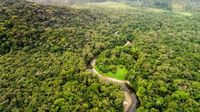As Europe grapples with relentless heatwaves and the effects of climate change become increasingly hard to ignore, people, cities, and even entire industries are rethinking how to keep cool. From the sweltering streets of Paris to the sun-baked plazas of Palermo, July 2025 brought a scorching reality: temperatures regularly soared above 40°C, and in Portugal, the mercury climbed to a staggering 46.6°C. According to reports cited by Flight Centre South Africa, more than 2,300 deaths across 12 European cities were linked to heat-related illnesses in just ten days that month, with approximately 65% of those fatalities directly associated with climate change.
Europe isn’t just hot—it’s the fastest-warming continent on the planet, heating at about twice the global average since the 1980s. The traditional summer allure of destinations like Rome, Milan, and the French Riviera is starting to lose its shine as travelers and locals alike search for cooler, safer, and more sustainable alternatives. "The temperatures are impacting comfort, safety, accessibility, and long-term sustainability," said Sue Garrett, general manager at Flight Centre South Africa, underscoring the far-reaching consequences of this new climate reality.
Travelers are responding in droves. A global survey revealed that by 2025, 72% of South Africans intended to travel outside the peak season, with 49% opting for off-season and 23% choosing shoulder-season travel. The motivations are clear: escape extreme temperatures, avoid crowds, and save on costs. This trend is fueling the rise of so-called "coolcations"—holidays to places where the thermometer isn’t out for revenge.
So, where are these new havens? Sweden, with its mild summer temperatures often in the 20s°C, long daylight hours, and pristine lakes, is leading the pack. The country’s focus on sustainable tourism and outdoor activities like hiking, swimming, and kayaking makes it a top choice for those seeking both adventure and comfort. Finland’s “Midnight Sun” offers a similar draw, with 15-25°C temperatures and peaceful landscapes perfect for berry picking and hiking under nearly 24 hours of daylight.
Norway’s breathtaking fjords and mountain vistas, Slovenia’s Julian Alps, Switzerland’s high-altitude countryside, and the Scottish Highlands—all offer cooler, milder climates and a wealth of activities for the heat-averse. Even countries like Albania, Montenegro, and Bulgaria are seeing their mountainous regions become refuges for travelers hoping to beat the heat. The Rila and Pirin mountains in Bulgaria, for example, not only provide cooler air but also offer stunning views and unique wildlife, a refreshing alternative to the bustling Black Sea resorts.
But beating the heat isn’t just about where you go—it’s about how we live, build, and even reforest. Scientists are now looking at the very trees around us for answers. A recent study published in npj Climate and Atmospheric Science analyzed the direct physical effects of reforestation, moving beyond the well-known benefits of carbon sequestration. The findings? Planting trees doesn’t always cool things down, and the impact depends heavily on geography and local climate.
In tropical regions like the Amazon, Congo, and Southeast Asia, trees cool their surroundings through a process called evapotranspiration—a kind of “vegetal sweat.” Here, trees release water vapor, which cools the air and promotes cloud formation, blocking some of the sun’s intensity. In central Africa, this mechanism can lower temperatures by up to 0.45°C, as noted in the study. While the overall global cooling effect of evapotranspiration is modest (about 0.005°C), when combined with carbon storage, strategic reforestation can help reduce the global average temperature by 0.1°C to 0.2°C. In a world racing against the clock to limit warming, every fraction counts.
Trees also play a surprising role as firebreaks in tropical savannas and dry grasslands. By increasing tree density, these ecosystems reduce the spread of wildfires—a major threat in countries like Brazil, Zambia, and Indonesia, where agricultural burns are common. However, in the high latitudes of the northern hemisphere, such as the northeastern United States and southern Canada, reforestation can backfire. There, trees absorb more solar radiation and accumulate dry biomass, sometimes raising local temperatures and increasing fire risks. The takeaway? Reforestation must be strategic, focusing on recently deforested areas and avoiding agricultural or inhabited zones, as recommended by researchers using data from 12 international climate models.
Meanwhile, in the heart of Bamako, Mali, a different kind of cooling revolution is underway—one rooted in ancient wisdom. A medical school there stays refreshingly cool, even during the hottest days, thanks to its construction from locally sourced, unfired mudbricks. Architect Mariam Sy explains that these mudbricks are slow to transfer external heat inside, making them perfectly suited for the Sahel region’s relentless sun. The environmental benefits are significant: producing mudbricks emits minimal CO₂ compared to concrete, which is responsible for up to 8% of global carbon emissions. The bricks are made by mixing clay, sand, and a touch of cement, then compressed and air-dried—no kilns or fossil fuels required.
Sy and her peers are challenging the misconception that mudbrick buildings are fragile. With proper production, these structures are not only durable but also beautifully adapted to local needs. The movement toward earthen architecture in Mali is more than a trend; it’s a call to rethink construction norms. As Sy puts it, the goal is to make the use of local materials like earth and stone the default choice, not the exception. In a world where energy costs are rising and climate change is accelerating, this kind of traditional construction offers a powerful example of how the past can shape a cooler, greener future.
Efforts to keep cool aren’t limited to architecture and reforestation. In Massawa, Eritrea, the Workers Vocational Training Center, in partnership with the Ministry of Water, Land and Environment and the Ministry of Defense, recently completed a three-month training course on cooling and heating systems for 16 youth. According to Mr. Habtemariam Tesfamicael, a representative of the National Confederation of Eritrean Workers, 70% of the training was practical, with participants drawn from the ministries involved. Col. Mehari Feseha, head of Logistics at the Defense Forces Training Center, emphasized the importance of applying this knowledge in real-world settings, while Eng. Robel Kibrom, head of Chemicals and Wastes at the Ministry of Water, Land and Environment, highlighted the role of vocational training in sustainable development. Similar programs are planned for the future, reflecting a growing recognition that technical skills are essential for adapting to a warming world.
From the mountains of Scandinavia to the mudbrick walls of Mali and the training centers of Eritrea, the quest to stay cool is driving innovation, adaptation, and a return to time-tested solutions. As the climate crisis intensifies, these efforts may offer not just relief from the heat, but a blueprint for a more resilient, sustainable future.





